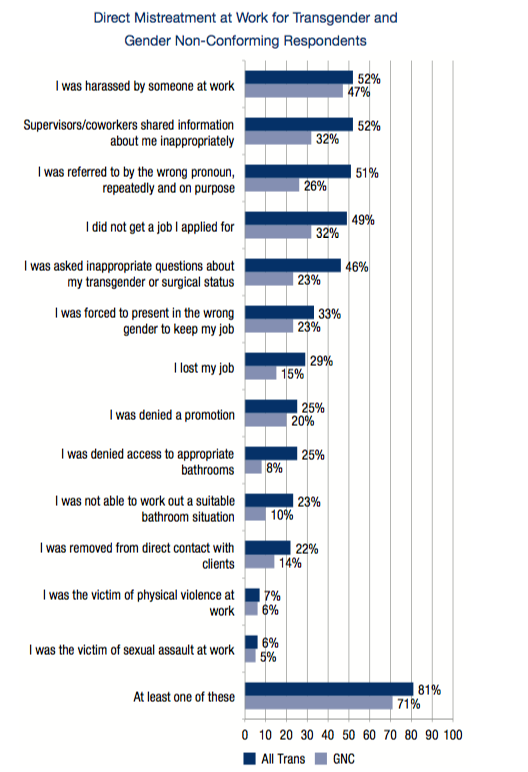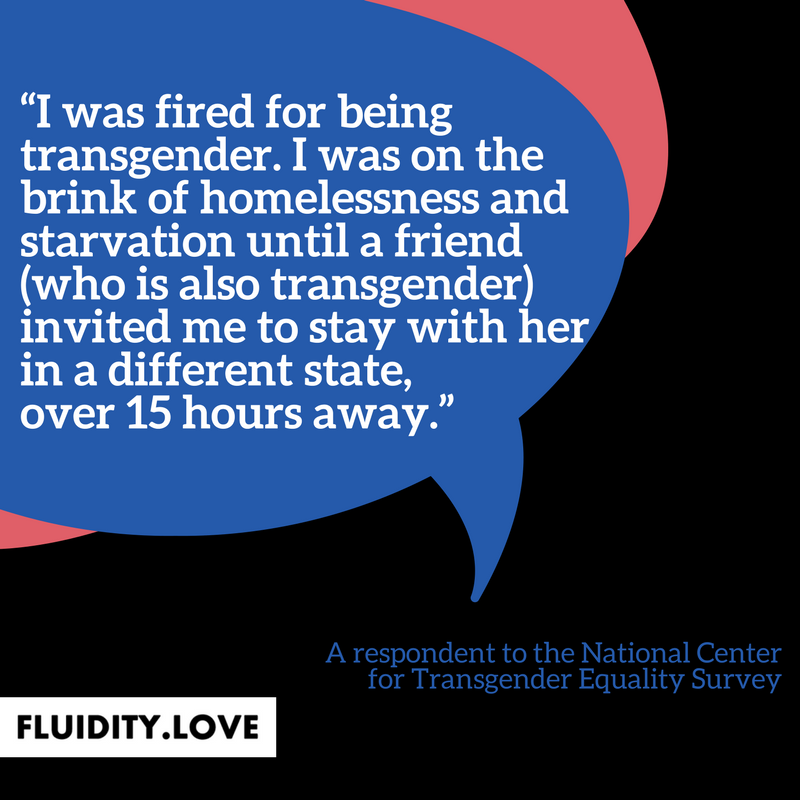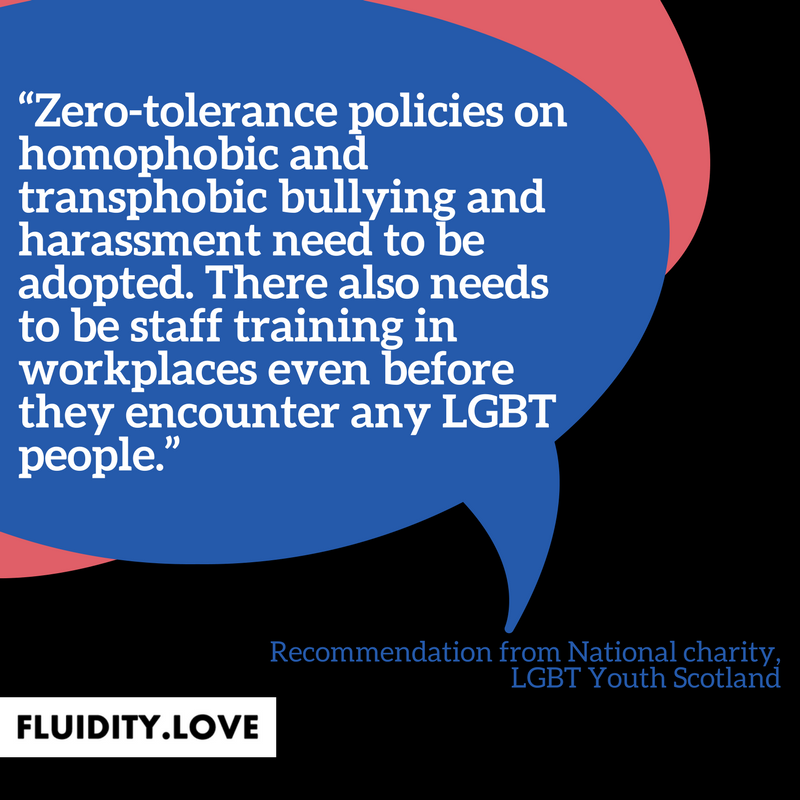If you are working in the HR department of your company, working in diversity or education, are in any position of leadership at your organization, are a coach, or if you have teenagers at home, you’ll want to pay attention to what follows as it will solve your existing adaptive issues on gender fluidity. What we’ll break down with data is that many millions of people around the world now identify as gender fluid, non binary or transgender. They are your customers, your clients and your co-workers. We also break down how much evidence there is that companies and schools today are not prepared for today’s world – leading to unnecessary pain, legal and PR problems as well as missed opportunities to create genuine and meaningful connections.
Meet Generation Z

[Photo: J. Walter Thompson Intelligence]
While this is happening across every age, every country and every race, it is particularly easy to see that what the future looks like thanks to studies on Generation Z. Born mid-1990s to early 2000s, it sees the world differently and has ushered in a new era regarding gender perception that is impacting every area of our lives and work, and every organization known to man. Indeed, GenZ no longer views gender as a defining parameter for a person, and even further, GenZ has embraced gender fluidity. It is, no doubt, a major cultural shift, if not THE most important one in centuries.

[Photo: J. Walter Thompson Intelligence]
For the first time in known history, more young people are buying across the opposite gender line than are not.
In 2016 already, J. Walter Thompson’s 2016 study published a study that took businesses by surprise.
The evidence of a shifting world view is clear. Consumption behavior is impacted by this but it begins at the very core of a shift in an understanding of our own identities and who we can be (and who we aspire to be).

[Photo: J. Walter Thompson Intelligence]
How (not) ready are you?
While GenZ is the leading generation, many (and more and more) people of all ages have already ‘come out’ — i.e. finally shared their gender fluidity out with the world instead of hiding to conform to what is now the obsolete old norm. Yet, how (not) ready are you and/or your organization? It’s more than likely that you personally, or your company/organization are not prepared for the tsunami of changes involved.
To address this issue, Fluidity.love is hosting immersive workshops for businesses but also individuals. The workshops will be sanctioned by a certificate of completion, attesting you followed the course and you are, at your own level, ready for the gender fluid generation. The goal is to provide individuals with training so they can lead their departments or organization towards the gender fluidity change. And the change starts at home, as for everything else, meaning it’s a people-first approach that will help organizations make the switch smoothly and efficiently.
Discrimination at work and fear

[Photo: LJ for Fluidity.love; Data: National Center for Transgender Equality]
The reality is beyond grim across the board, and across continents.
According to Stonewall’s LGBT in Britain -Trans Report 2018, one in eight trans employees (12 percent) have been physically attacked by colleagues or customers in the last year.
51 percent of trans employees and 50 percent of non-binary people have hidden or disguised the fact that they are LGBT at work because they were afraid of discrimination.
The reality depicted by the U.S. Commission on Civil Rights‘ studies summary is nowhere better.

[Photo: LJ for Fluidity.Love; Data: U.S.Commission on Civil Rights]
Almost a quarter (23 percent) of employed transgender workers reported mistreatment such as “being forced to use a restroom that did not match their gender identity, being told to present in the wrong gender in order to keep their job, or having a boss or coworker share private information about their transgender status without their permission.”
Another source: data released in 2016 from the largest national survey of transgender Americans by the National Center for Transgender Equality, called “Injustice At Every Turn.”


[Photo: National Center for Transgender Equality]
The study findings highlight that in the past year:
- 30 percent of respondents who had a job claimed they were fired, denied a promotion, or experienced other forms of mistreatment (e.g., verbal harassment, physical or sexual assault at work) due to their gender identity; 13 percent of respondents claimed a lost job.
- 15 percent of respondents were verbally harassed, physically attacked, and/or sexually assaulted while at work.
- 77 percent of respondents who had a job in the past year hid their gender identity, delayed their transition, or quit their job, due to fear of negative repercussions.
- Due to perceived bias in employment, 20 percent of those surveyed felt forced to have to work in the “underground economy” (e.g., sex work or dealing drugs).
Employment discrimination stretches to also significantly affect LGBT youth and their long-term career opportunities. Closeted LGBT employees “who felt isolated at work” are 73 percent more likely than their heterosexual counterparts to leave a position within three years.
Discrimination in housing

[Photo: LJ for Fluidity.Love; Data: National Center for Transgender Equality]
There are more reasons than one can count for the homelessness of transgender or non-gender binary people: from the trauma and the fact of being fired from work because of gender and sexual orientation discrimination; being denied housing because of the same discrimination or being without a support group, including family, who can house you when you have nowhere else to turn to.

The economic cost of discrimination
As an organization, you can close your eyes on institutional or peer discrimination against LGBT employees… until it starts costing you way more money than you ever expect it to.
Replacing employees due to discrimination can cost anywhere from $5,000 to $10,000 for an hourly worker, and $75,000 to $211,000 for an executive who makes $100,000 a year in direct and indirect costs (exit interviews, severance pay, temporary staffing, loss of productivity, training new employees).
Using data from the Organization for Economic Co-operation and Development (OECD), Out Now Global estimates that the U.S. could save $8.93 billion if LGBT workers felt comfortable being out at work, without fear of harassment or discrimination. The report estimates that:
- for businesses with 10,000 employees their savings could range between $127,000 and $944,000; for businesses with 50,000 employees, their savings estimated between $633,000 and $4.7 million;
- businesses with 100,000 employees, $1.3 million and $9.4 million;
- and for those with 250,000 employees, $3.2 million and $23.6 million in savings.
Beyond direct costs, businesses have also cited that having a diverse staff positively affects office operations, including: recruitment and retention, ideas and innovation, customer service, productivity, customer base, and employee relations and morale.
Bottom line: letting discrimination “run its course” is no wise way to invest your time and money. There is only one way to turn things around, for everyone’s benefit: it is to make your organization understand gender fluidity and to equip every leader, decision maker, and preferably, employee, with the tools to address the issues that surface relating gender approaches with the LGBTQ members of your community.
Watch out for the backlash from GenZ as conscious consumers
You may, in fact, have a teenager at home and you already know that GenZ doesn’t consume like generations prior. And yet, they are the key demographic dictating trends and influencing consumption. Just think, in two years’ time, GenZ will account for 40 percent of consumers, amounting to almost half of the population, with a projected purchasing power well beyond $44 billion a year.
The approach to design will have to be different: GenZ will reject flat out gender normative products. The approach to marketing will have to be seriously overhauled, as consumers demand that the way companies sell things to them reflects who they are and how they think. At this point, only a few brands really get it. One example is The Wonder Of Us, Coca-Cola’s SuperBowl 2018 ad. As Eater explains, it pulls at the heartsrings, it is beautiful, embracing fluidity, featuring all genders, sexualities, ethnicities: the world as Gen Z, and thankfully a lot of other people, see it.
A brave new world
Despite the horrifying discrimination non-gender conforming people are subjected to, gender fluidity is here to stay and thrive. First, no one can let these atrocities last without addressing them. Second, to address them, we need to understand the mindsets and universes of our gender fluid coworkers, friends, family members, children. If you have a teen at home, you most likely are aware that they use new, more inclusive vocabulary. They are ahead of you when it comes to gender fluidity. Bear in mind, children are born unbiased, they are open-minded. According to the JWT study, 56 percent of GenZ are familiar with the existence of gender neutral pronouns and have heard people referred to as “they,” them, or “ze.” That compares with 4″ percent of Millennials.
How about you? Your company? How would you address a gender-fluid employee or colleague or candidate?

[Photo: J. Walter Thompson Intelligence]
You, your department, your leadership, your company all NEED to be ready. We all do. You need to understand the terms and the mindset in order to fully function respectfully and embrace gender fluidity. Fluidity.love’s workshops will support you as you move through the process.

There is no avoiding it: training is the key to making homes, playgrounds, schools and, later, the workplace, integrative spaces, safe spaces for the gender fluid person. The future is already here and it has started. Our immersive workshops have launched March 21 to help you and your family, organization, group — you name it.
Please spread the word for our next Online Workshop on April 10th to help people understand how to be sweet and wonderful in the new world. We create a safe space to ask clumsy questions and understand non binary, transgender and fluid people.

Originally published at www.fluidity.love


